QuietOn Active Squelch Overview
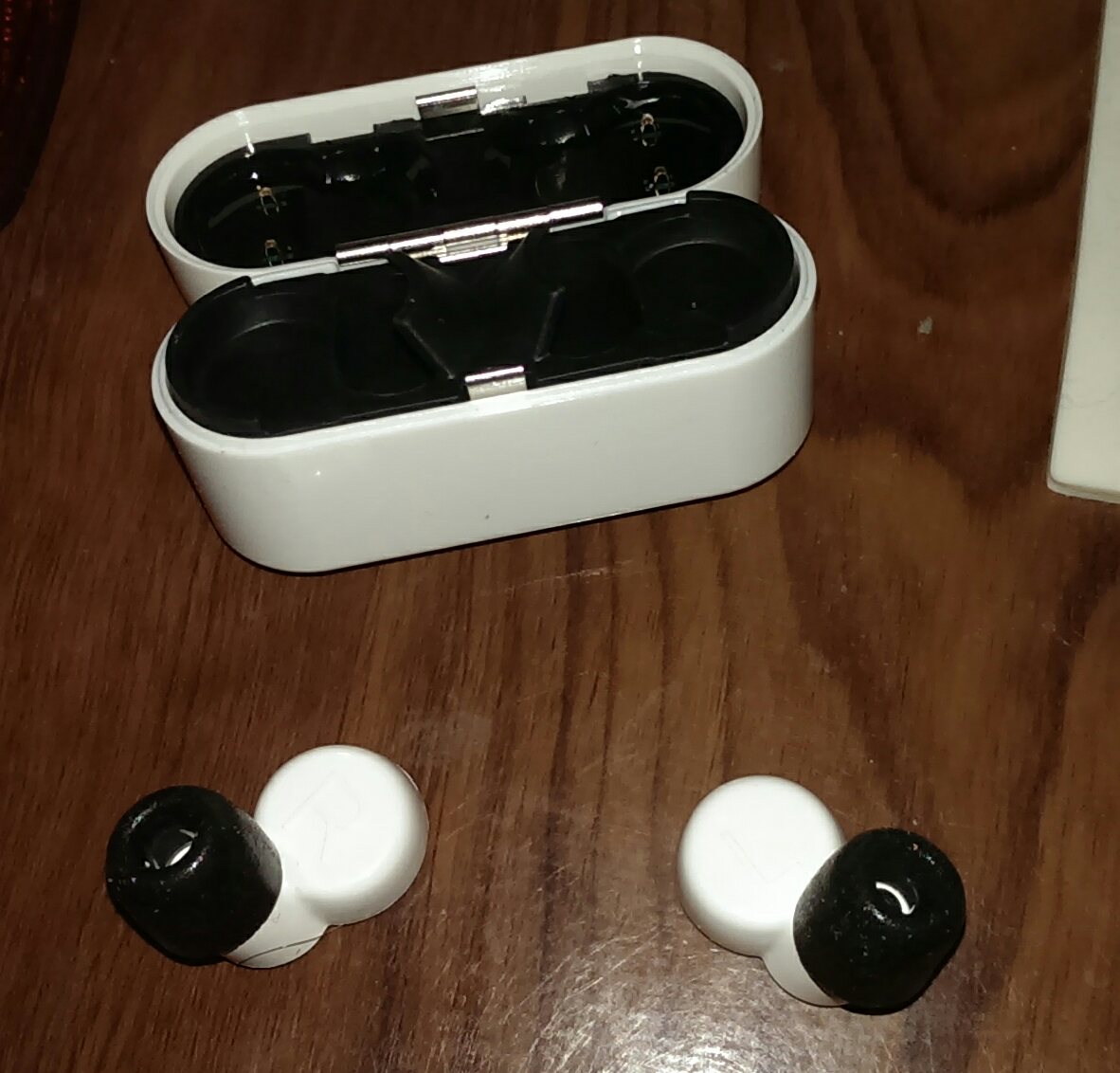
Hello, Habr!
I decided to join such a favorite form of leisure for the local public as testing products from the Dadget assortment. And the first pancake I will have is QuietOn Active Squelch Kit. I have a user case for this thing, but more about it later.
A little boring theory
Despite the similar appearance, these devices are common with today's trendy Bluetooth headphones. Inside, everything is the same: battery, microphone, digital signal processor, amplifier and speaker. Only the Bluetooth module is not. But they work differently.
The microphone picks up ambient sounds, the digital signal processor corrects the frequency response, amplifies the amplifier, and the speaker emits exactly the same vibrations as those that enter the ear from the same directions, only in antiphase. And all this right in your middle ear is subtracted and turns into heat. Of course, warming up in this way is not enough power, but silence is ensured.
But what about the KISS principle? Construction headphones will turn the surrounding sounds into heat even in the foam, and they will not even reach the outer ear. And mind you, without those of your batteries and processors. Well, I’ll come from far away.
The KISS principle increases reliability, but not flexibility. So, in large halls of drummers, they are shielded with Plexiglas, and inside the resulting “cabinet” they are surrounded by microphones. Although the KISS-principle assumes that it is easier not to pass the sounds of the drums through the general audio system of the hall, but simply to give them the opportunity to spread directly to the audience. The instruments are loud, even in the last rows they will hear!
Yes, they will. But if the installation is positioned asymmetrically on the stage, then one half of the hall will hear louder than the other. Another drummer will interfere with singing and playing by other performers on stage. And the correction of the frequency response and the operational volume control compared to other artists is out of the question!
And if the drummer is acoustically shielded, then with the signal from the microphones behind the plexiglass, you can do whatever the sound engineer wants. Yes, and in the columns directed to the hall, let go, but in the "monitors" on the stage - no.
That's the same here. Construction headphones will attenuate all sounds equally. And an active squelch with a digital signal processor can suppress some sounds, and leave others unchanged. What a programmer writes will be done with sound. Talk with a neighbor in car 81-717 / 714, which are many more? Easy!
And now - to practice
The kit is delivered in such a box: We
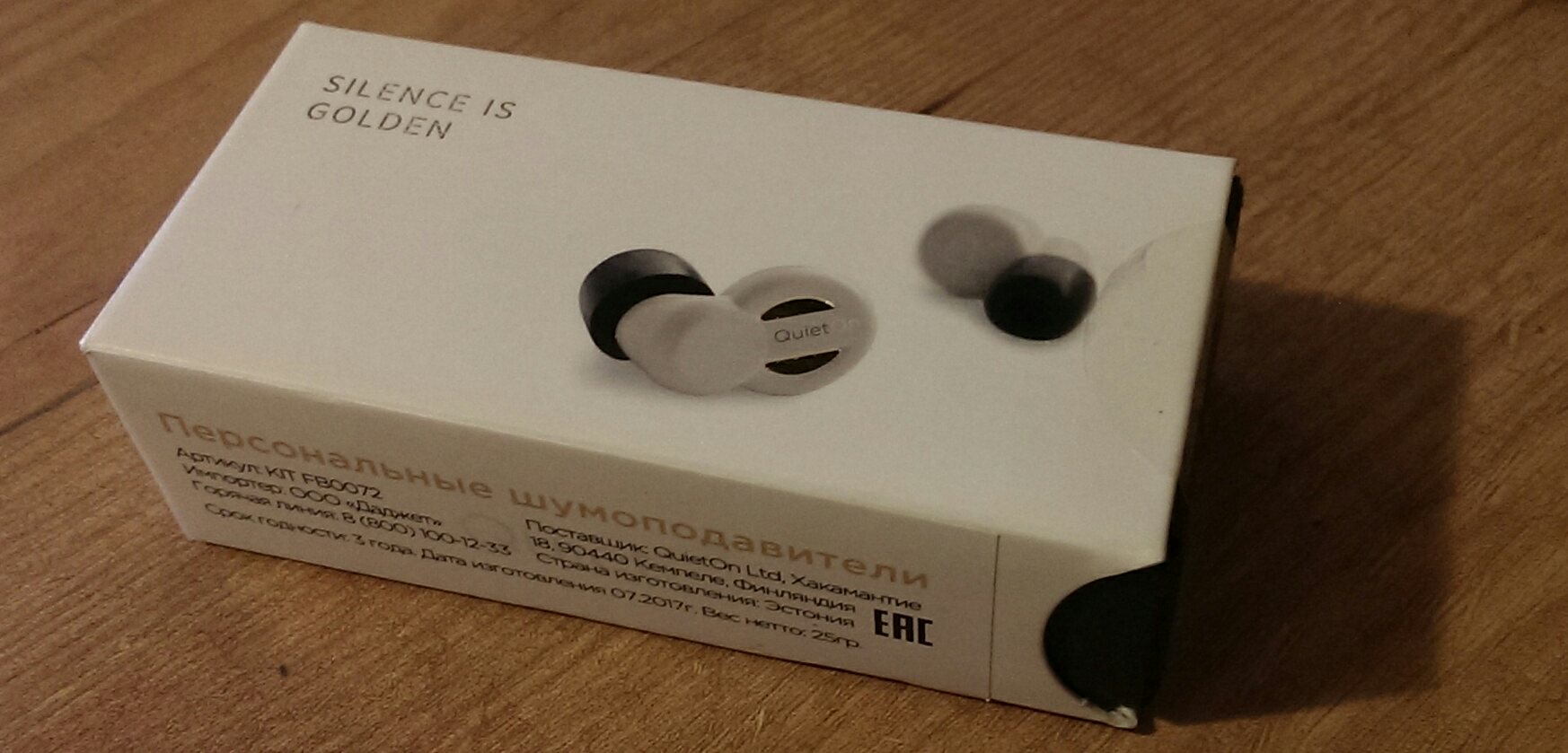
pull out the cardboard “box”, as from a miniature chest of drawers, and we see a hard case with noise suppressors:

Having disassembled the “box”, we take out a cord, a bag with four additional earbuds of other sizes and instructions in English. The instruction in Russian is placed in the same box separately.

Opening the case, we see contact pads on the squelch, which are both design elements, and on the inner surface of the cover - springs:

Again, close and find the connector on the side of the cover:
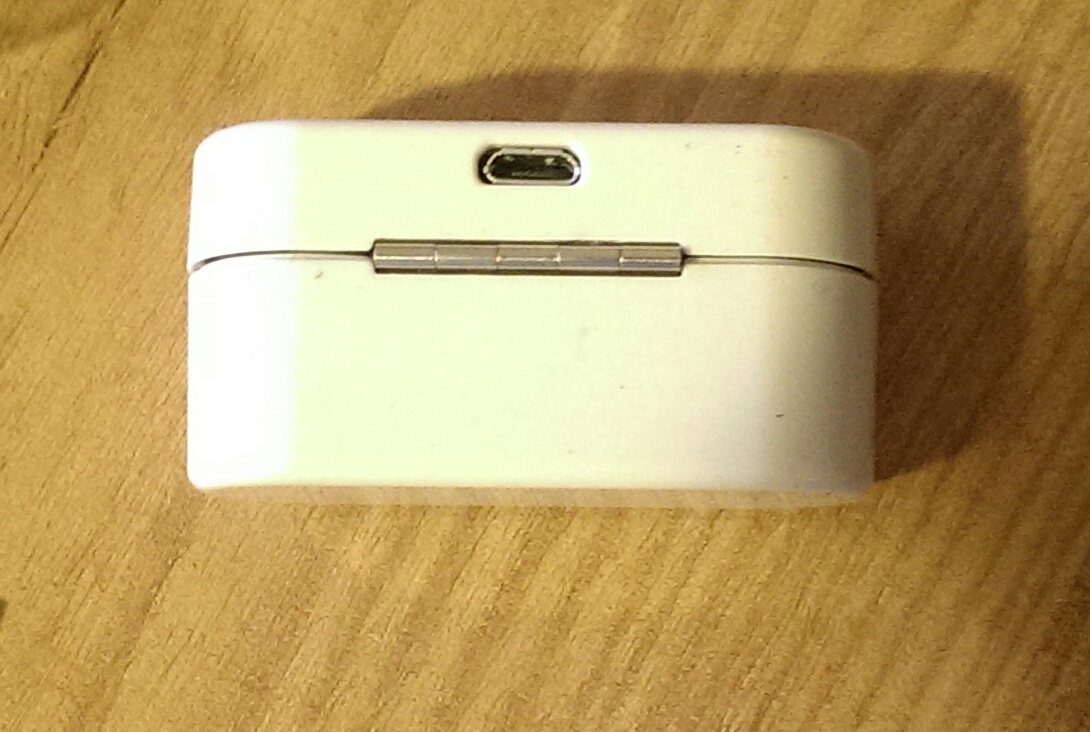
Together with the supplied cord, the cover looks like this:

The power supply is not included, this is “logic Nintendo ": everyone already has it. We put a case with noise canceling for charging:
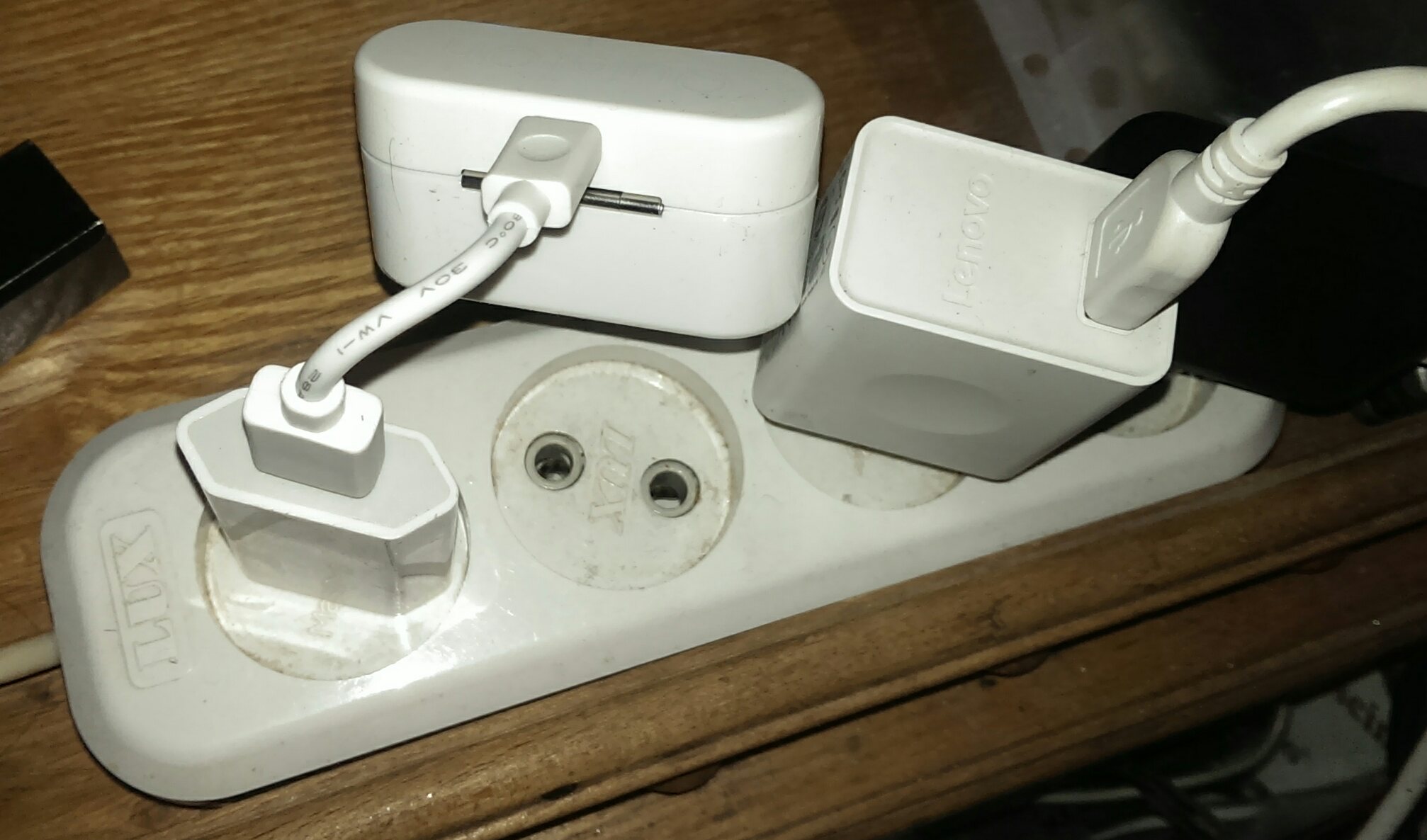
If you take a picture without a flash, the charging light becomes visible. There are two LEDs, which allows you to determine whether the springs are well pressed to the platforms of each of the devices, and whether the battery is charged in each of them.

Yuzkeys
While charging, we get acquainted with the user case. Here it is, our hero of the occasion, in all its glory: It

is interesting in that, in the opinion of the authors of articles on exercise bikes, it ... does not exist. Everywhere they write that they have three types of loads: mechanical, magnetic (eddy currents) and electric. Here is a radial fan.
This simulator - on the contrary, the triumph of the KISS-principle, as they dragged in the nineties from the clothing market, it works, but it screams! He doesn’t lay his ears, but he interferes with listening to the radio. This is the third, and it is louder than the previous two. Doesn't really help.
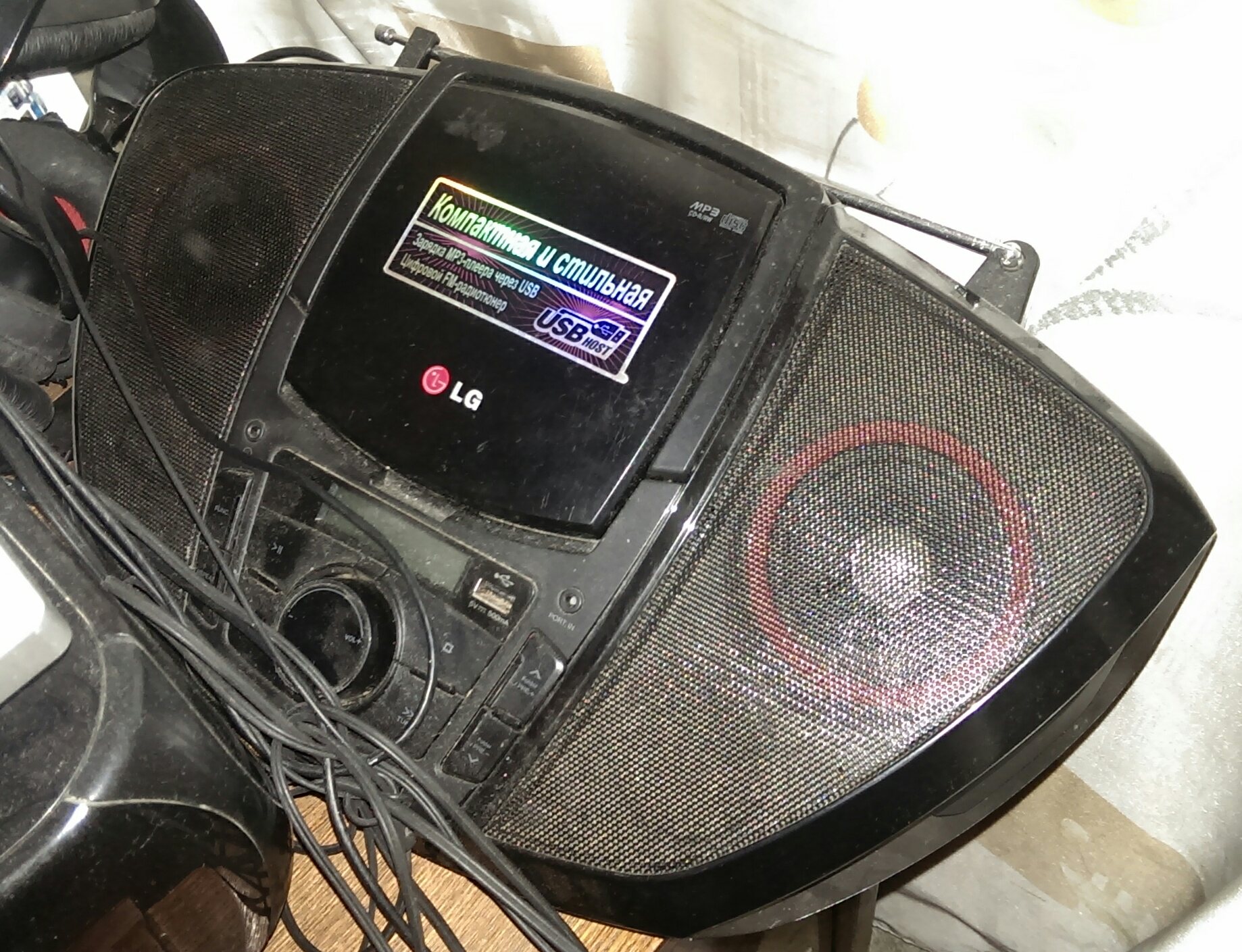
Let's see if the squelch can handle it.
Back to practice
An hour passed, and the brightness of the LEDs was greatly reduced. Charging is over. Joules consume noise suppressors more slowly than they gain - with worn out batteries they last for 50 hours. Open the case and get the device.

The manual says that they will turn on automatically after removing from the case. At first, I decided that there were magnets in the case, and Hall sensors or reed switches in the headphones. But it was not possible to find the magnets in the cover, which means that the devices turned on even earlier - when the cover was opened and the pads stopped contacting the springs. To check the battery charge, the instruction suggests closing the earbud with your finger so that acoustic feedback occurs. It follows that not only the speaker, but also the microphone are directed into the insert. The device “hears” the sound exactly as you hear it. It’s easier to subtract.
Let's check
Charge perfectly! Squelchs should be worn, paying attention to the letters L and R, and also turning them only as shown in the figure. Otherwise, the noise reduction efficiency will be less. In addition, improper donning may result in minor acoustic feedback.

Turn on the radio and try to spin the exercise bike, putting on noise cancelers, as well as not putting them on. Indeed, with them the ratio of the volume of the radio and the exercise bike changes - in favor of the radio, of course. But she sounds noticeably quieter. There are no adjustments or switching modes.
I did not immediately manage to record the sound in the first case and in the second. I press the insert to the microphone of the smartphone - and there is acoustic feedback, weaken the clip - the sound penetrates the device. So these two audio files are not really recorded: in one case, I brought the smartphone closer to the simulator, in the second I carried it a little further. But what the user hears is conveyed quite accurately.
Without noise reduction
And with that, of
course, you can listen to music on a noisy simulator by simply placing ordinary headphones under the construction headphones. But it is not only less elegant, but the ears will sweat. So, despite the minuses (some suppression of the necessary sounds, the danger of losing miniature noise cancelers like Bluetooth headphones), the advantages outweigh, and in general, the product can be recommended for such an application.
And in some situations, construction headphones are completely inappropriate - you will look strange in them. In addition to the old-type metro cars mentioned above, active noise cancelers can be worn in any noisy modes of transport - unless, of course, you are a passenger, not a driver. And not only in transport, but also outside it. Sometimes at the bus stop you have to hide from the noise behind the stop pavilion, but on the opposite side it does not have a bench. The main thing is not to forget to remove the device, like ordinary headphones and a hood, at the zebra and the railway crossing.
By following the link and using the TORMOZ promotional code, you can purchase this product with a 10% discount.
Thanks for attention!
